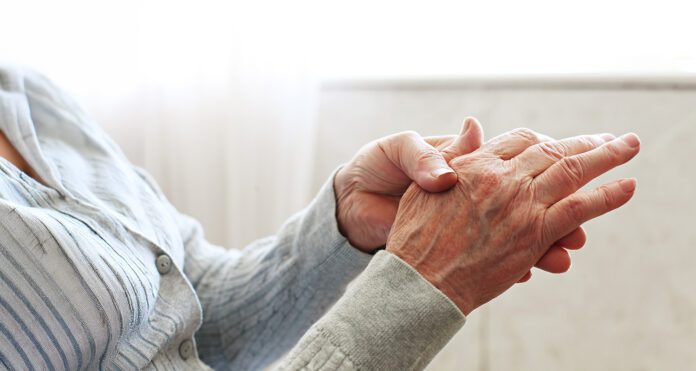Millions of Americans live with the pain and discomfort associated with arthritis. According to the Arthritis Foundation, there are more than 100 different types of the disease; the most common form of arthritis is osteoarthritis (OA), alongside rheumatoid arthritis (RA), which is the most common form of autoimmune arthritis.
Mary Beth Humphrey, M.D., Ph.D., is a rheumatologist with OU Health as well as a rheumatology professor and associate dean for research at the University of Oklahoma College of Medicine in OKC.
“The Centers for Disease Control and Prevention (CDC) estimates that 32.5 million U.S. adults have osteoarthritis,” says Humphrey. “Although men and women get osteoarthritis, 62% of women will develop it. Osteoarthritis may begin in the forties but peaks between ages 55 and 64.”
She explains that osteoarthritis is a condition of joint damage that occurs as we age or after joint injuries such as anterior cruciate ligament (ACL) tears.
“The most common joints in which osteoarthritis occurs are the knees, hips and fingers,” she says. “Knee osteoarthritis is often associated with pain in the joint that is worse with activities like walking or running, climbing stairs, or getting out of a chair or car after sitting a long time.”
She says x-rays are needed to diagnose osteoarthritis and treatment plans may include physical therapy and medications such as acetaminophen, non steroidal anti-inflammatories like ibuprofen or naproxen, diclofenac gel, capsaicin cream and duloxetine.
“Weight loss is effective for knee and hip osteoarthritis and may prevent the need for total joint replacement,” says Humphrey. “At this time, we do not have therapies that stop the progression of osteoarthritis.”
In contrast, Humphrey says rheumatoid arthritis is an autoimmune disease where the immune system attacks the joints of the body.
“It often causes pain, stiffness and swelling of the hands, wrists, elbows, shoulders, knees, hips, ankles, feet and sometimes the neck,” she says. “It is frequently seen in many joints on both sides of the body, whereas osteoarthritis is often one side, such as one knee. Rheumatoid arthritis can also cause eye inflammation and lung disease, and osteoarthritis does not cause these problems. Rheumatoid arthritis pain is usually worse with inactivity and improves or loosens up after some activity—and it may be associated with autoantibodies like the rheumatoid factor or the anti-CCP antibody.”
She says rheumatoid arthritis is treated with immunosuppressive medications that are tailored to each patient’s condition.
“By controlling the inflammation, successful treatment will prevent disabling arthritis and joint deformities,” says Humphrey. “Rheumatoid arthritis affects about 1.5 million Americans…and women are two to three times more likely than men to get rheumatoid arthritis—which can occur in children or into old age, but it usually starts between 30 and 60 years of age. A family history of rheumatoid arthritis, smoking, obesity and poor dental hygiene increase the risk of rheumatoid arthritis—and similar to osteoarthritis, Native Americans have the highest risk of rheumatoid arthritis.”
Unfortunately, Humphrey says there are no sure ways to prevent osteoarthritis or rheumatoid arthritis.
“Both occur as a combination of age, inherited risk and environmental triggers,” she says. “Exercise and maintaining ideal body weight can lower the risk of both conditions.”
How Osteoporosis Differs
While individuals with osteoporosis may experience joint pain, it’s important to recognize the difference between osteoporosis and osteoarthritis.
“Osteoporosis is the thinning of the bones that leads to increased risk of fractures,” says Humphrey. “The spine, hip and wrist are most sensitive to osteoporosis and have the highest risk of fractures. At the time of menopause, typically 45 to 55 years old, women rapidly develop osteoporosis – this is the most common cause of osteoporosis. Men may also develop osteoporosis, but usually not until their 70s.”
She says other causes of osteoporosis include the use of prednisone or other glucocorticoids, excessive alcohol intake, smoking, low body weight, and other conditions like diabetes, thyroid disease, inflammatory bowel disease, rheumatoid arthritis and chronic liver or renal failure.
“We can help prevent osteoporosis by taking adequate vitamin D and dietary calcium, regular weight-bearing exercise and modifying other factors like stopping smoking or decreasing alcohol consumption,” says Humphrey.























